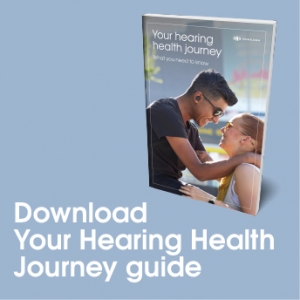Noise pollution control is a major challenge for those living in today’s urban environments. From airplanes to street sweepers to garbage trucks and more, urban dwellers face a sometimes chaotic auditory environment. The effect can be unsettling or even unhealthy in some cases, so its important that we educate ourselves to recognize when our long-term hearing is at stake and real-world noise pollution solutions we can implement in our daily lives.
Reducing Noise Pollution is a Health Priority
Dr. Maria Neira, WHO Director for the Department of Public Health, states that “health must be the number one priority for urban planners”. This ranges from innovative public spaces, access transport and of course, air and noise pollution. Recent WHO studies have ranked traffic noise second among environmental threats to public health (air pollution being number one).
Causes of Noise Pollution
Most noise pollution in cities can be attributed to two main sources:
- Excessive noise, including occupational noise such as that from machinery and explosions.
- Recreational exposure to loud sounds such as that from use of personal audio devices at high volumes and for prolonged periods of time and regular attendance at concerts, nightclubs, bars and sporting events. Below is a chart showing the level of noise that we may come across on a daily basis and the danger it may pose to our hearing health.
Check out this series of statistics and useful information related to the Dangers of Noise Pollution.

Share this Image On Your Site
Please include attribution to Nuheara.com with this graphic by using the embed code below.
[/av_toggle]
[/av_toggle_container]
Levels of Noise and Danger to Hearing Health
PAINFUL & DANGEROUS—USE HEARING PROTECTION OR AVOID
| dB | Noise |
| 140 | Fireworks |
| 140 | Gun shots |
| 140 | Custom car stereos (at full volume) |
| 130 | Jackhammers |
| 130 | Ambulances |
UNCOMFORTABLE—DANGEROUS OVER 30 SECONDS
| dB | Noise |
| 120 | Jet planes (during take off) |
VERY LOUD—DANGEROUS OVER 30 MINUTES
| dB | Noise |
| 110 | Concerts (of any genre of music) |
| 110 | Car horns |
| 110 | Sporting events |
| 100 | Snowmobiles |
| 100 | MP3 players (at full volume) |
| 90 | Lawnmowers |
| 90 | Power tools |
| 90 | Blenders |
| 90 | Hair dryers |
LOUD
| dB | Noise |
| 80 | Alarm clocks |
| 70 | Traffic |
| 70 | Vacuums |
MODERATE
| dB | Noise |
| 60 | Normal conversation |
| 60 | Dishwashers |
| 50 | Moderate rainfall |
How Noise Pollution Affects Us Everyday
The mix of excessive industrial and recreational noise exposure can result in noise pollution that makes inner city living and working difficult. Most of us turn to products using passive noise cancellation, the block out sounds, while listening to our music or podcasts as we go about our day.
In this scenario, headphone-wearers are simply masking the sounds of urban and industrial noise with more noise. Not only does this cause social isolation, it typically increases the risk of long-term hearing damage.
This type of hearing loss that is not initially identified and treated is known as Hidden Hearing Loss , and can result in further damage if not assessed and mitigated.
A 2011 study from the World Health Organization (WHO) ‘Burden of disease from environmental noise’ looked at environmental noise in Western Europe, collected over a 10-year period. The study looked at noise from city environmental noise and found links to health conditions such as, sleep disturbance, tinnitus and cognitive impairment in children.
The report stated: ‘there is overwhelming evidence that exposure to environmental noise has adverse effects on the health of the population’
Ways to Reduce Noise Pollution
Various steps can be taken to mitigate the effect of noise pollution on physical and mental health. Below you will find several practical noise pollution solutions you can try:
Around the home:
- Close the windows. By simply closing the windows, we can reduce the amount of noise entering into our homes and buildings.
- Improve your insulation. Insulation measures are some of the basic and most practical ways to reduce noise pollution at home.
- Do wall-to-wall carpeting. Wall-to-wall carpeting comes in as another simple and practical way of reducing noise pollution. Such an undertaking goes a long way in reducing incoming noise into our homes or offices.
- Be creative with the house layout. For instance, noisy machines can be situated in areas that are not close to the sitting/resting or working areas.
- Turn off the electronic or reduce the volume. The solution is to turn them off when not in use and also keep them on moderate volume to reduce noise pollution. Besides, by turning them off you’ll also be saving electricity costs.
In your wider community/workplace:
- Plant trees. Trees have been established to be effective in reducing noise levels within urban settings, around major highways, and even at the places we stay.. In addition to that, trees have various aesthetic advantages and improve air quality.
- Have a dedicated quiet space. Having a dedicated quite space can pay off whenever we want to escape the noises that make us uncomfortable and reduce the quality of life. Quite spaces can guarantee as much as 100% soundproof areas.
- Install cubicles and wall partitions. In places with large free space such as offices and other big rooms at home, wall partitioning and the use of cubicles will reduce the overall indoor noise. Cubicles and wall partitions act as noise absorbers and prove very effective even with low-level installation.
- Shut the door. Shutting the door keeps away unpleasant sounds especially if you have noisy neighbors.
Activism/Government Response:
- Creating awareness and education on the consequences of noise pollution.
- Let’s all be good neighbors. By being a good neighbor, it means maintaining awareness of your loud music, barking dogs or loud parties among others.
- Put pressure on the relevant city or governing authorities to introduce noise regulation policies.
Source: https://www.conserve-energy-future.com/easy-and-practical-ways-to-reduce-noise-pollution.php
Using Technology to Combat Noise Pollution
While the steps above can help with mitigating the health effects of noise pollution, technology and innovation has stepped in to help with this growing issue, in a way that fits in with our tech centric social and work environments.
By providing products that allow for an augmented hearing experience, companies such as Nuheara are not only providing a solution to assist with battling excessive urban noise, but they also bring awareness to the health risks and impacts, both mental and physical, of unchecked and increasing noise pollution in our cities.
Nuheara’s range of devices enable an unparalleled augmented experience. Using patented Speech In Noise Control technology, users have the capacity to turn down much of the noise of the physical world around them, while enhancing speech and the sounds they want to hear. The result is an intelligent means of noise pollution control.
Additionally, personalized tap touch controls enable users to instantly switch their hearing profiles on the fly. By selectively allowing in certain noise frequencies, Nuheara earbuds prevent social isolation and help maintain situational awareness, even while listening to music or other digital audio. With the tap of the ear, a wearer can:
- Switch profile modes ‘street’ mode to ‘office,’ ‘driving,’ etc.
- Pause or play music
- Pick up or hang up phone calls
- Turn on/off the noise of the surrounding physical world
This combination of features is why Brett Williams from Mashable wrote that Nuheara earbuds might be “the perfect (earbuds) for city life” and that they are “a class above just about anything else I’ve ever put in my ears.”
Below are more excerpts from his experience controlling noise pollution with Nuheara earbuds on the streets of New York City:
“The buds have a killer feature that’s particularly valuable in the city — you can choose to turn the world on and off. The augmented hearing functions, activated via a simple tap, can be used to tune into the scene around you just as well as its noise-cancelling setting shuts sound out. Speech amplification can home in on someone’s voice to help you make out exactly what they’re saying over the constant noise in the background.
I first experienced this on a crowded subway, totally by accident. I set the buds to their “Street” setting in their companion app (other modes include Home, Office, Workout, and Plane) and paused my music for a moment. I was able to hear the conversation going on four people away from me as clearly as if they were speaking directly to me.
I’ve also used the setting to pick up friends’ voices better on a busy street. Instead of asking them to speak up, I was able to tap my right ear to help boost their voices above the din.”
Additional IQbuds2 MAX Features
- Hybrid Active Noise Cancellation — With the most advanced form of ANC, IQbuds2 MAX uses three microphones to analyze and process sounds both inside and outside the ear. Advanced filtering circuitry creates cancellation waves in the ear to reduce distracting sounds and in-ear occlusion. With the tap of a finger, users can block external noises. Working in combination with SINC, this feature delivers a premium dual noise-isolation experience for unparalleled noise mitigation and control.
- Situational Sound — Nuheara’s proprietary Speech in Noise Control (SINC) adds unique sound controls for each situation. With SINC, wearers can quickly toggle their earbuds to the most comfortable noise settings for their location—muting background noise and enhancing focus on their direct conversations in a noisy environment.
- Advanced Digital Signal Processing — IQbuds2 MAX triple-core DSP system delivers optimal hearing fidelity and reduces occlusion to deliver the most natural enhanced sound ever in a hearing bud. IQbuds2 MAX have a 450MIPS signal processing engine in each earbud, offering an optimal natural sound experience.
- Sonic Accuracy — A large 9.2mm dynamic driver with vented acoustical design provides pitch-perfect sound fidelity. This improves sound quality, especially bass, which can be an issue with smaller earbuds.
- App Syncing with iPhone and Android — Nuheara’s user-friendly apps allow full control of the listening environment, including noise reduction and hearing processing. Users can adjust hearing preferences from the app and receive future developments and upgrades for the IQbuds2
- Intelligent controls — Nuheara’s smart sensors provide intuitive tap-touch and gesture control for a seamless user experience.
- Water and sweat resistant — All of Nuheara’s products are designed to maximize compatibility for an active lifestyle.
- The IQbuds2 MAX also include the convenience of a magnetic charging case that delivers up to 32 hours of on-the-go hearing enhancement and 20 hours of Bluetooth streaming. Compatibility with Bluetooth 5 offers faster transfer over a longer range.
*This post was originally published in February of 2018 and has been subsequently re–published with additional information and edits to the original content.


